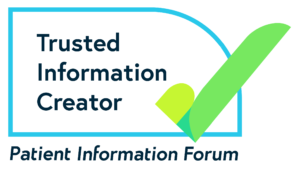Headache associated with exercise
Two types of headache associated with exercise
What are primary exercise headache and cardiac cephalalgia?
Exercise has long been recognised as an important factor in maintaining good physical and mental health. However, for people with migraine, exercising can be difficult as exercise is a recognised ‘trigger’ for a migraine attack.
Approximately 2-4 out of 10 people with migraine will report that exercise triggers an attack. In contrast, people who rarely exercise are more likely to have more migraine attacks and vice versa. Moderate aerobic exercise, such as walking, jogging or cycling has been found to reduce migraine frequency and improve the symptoms of migraine attacks.
While migraine is common and exercise as a trigger for a migraine attack is also common, there are important headache syndromes associated with exercise which should be investigated and require specific treatment. Two specific headache syndromes associated with exercise are described below.
Symptoms of primary exercise headache
Primary exercise headache is a rare headache that is distinct from exercise induced migraine. Many people with this condition also have migraine.
This headache can occur with many different exercises or sports.
- The headache can start during the exercise or within 30 minutes of stopping the exercise. The headache starts suddenly and can last between minutes to usually less than a day. The headache can be on one or both sides of the head and is most often a ‘pulsating’ headache but can be aching, pounding or throbbing.
- The headache may be accompanied with nausea (feeling sick) with or without vomiting (being sick), and increased sensitivity to light and/or sound.
- Factors such as exercising in heat, high humidity, high altitude, poor nutrition, caffeine use and alcohol use are believed to increase the risk of experiencing these headaches when exercising.
Treatment options for primary exercise headache
Primary Exercise Headache is not dangerous. However, more serious causes of headache associated with exercise should be excluded.
- A review by a neurologist is required and may include brain imaging.
- Most patients with this headache syndrome find it gets better on its own within months or years.
- These headaches can be managed without medications by either extending the warm-up before exercising or reducing the intensity of exercise.
- If medications are required, you may be prescribed daily oral indomethacin, a non-steroidal anti-inflammatory drug (NSAID). In addition, you may also receive a prescription for a medicine to prevent abdominal discomfort and gastric ulcers, known as a proton pump inhibitor (PPI) and includes medicines similar to omeprazole.
Symptoms of cardiac cephalalgia
Rarely, patients with atherosclerotic coronary artery disease, such as angina or heart attacks, may experience headaches that begin with exertion, such as walking, and which resolve with rest.
- This headache is normally felt on both sides of the back of the head, also known as the occiput. Other symptoms include chest/neck/arm discomfort, shortness of breath, light headedness, nausea and sweating, which are all hallmarks of a heart issue like angina. Migraine symptoms such as aura, sensitivity to light and sound do not occur with cardiac cephalalgia.
- The headache can be relived with use of nitroglycerine spray (GTN).
Treatment options for cardiac cephalalgia
It’s important to identify cardiac cephalalgia so the underlying heart disease can be managed. It also means that migraine specific treatments such as triptans can be avoided.
- An electrocardiogram (ECG) is an important first step in the diagnosis.
- Your GP may discuss managing risk factors of heart disease such as smoking, high cholesterol, diabetes and high blood pressure. You would need to be referred to a cardiologist for further investigations of the heart, which may include an exercise ECG or echocardiogram. A cardiologist may recommend an angiography.
- Treatment of the underlying heart condition resolves this headache syndrome.
About our information
 This information has been written by The Migraine Trust Information and Support Services team. It has been reviewed by our panel of expert health professionals and people affected by migraine.
This information has been written by The Migraine Trust Information and Support Services team. It has been reviewed by our panel of expert health professionals and people affected by migraine.
Our information has been awarded the PIF TICK quality mark for trustworthy health information.
If you have feedback on our information, please get in touch at: feedback@migrainetrust.org
References for our information are available on request.


